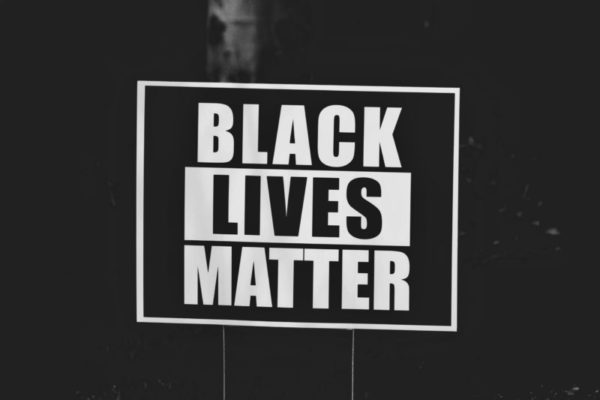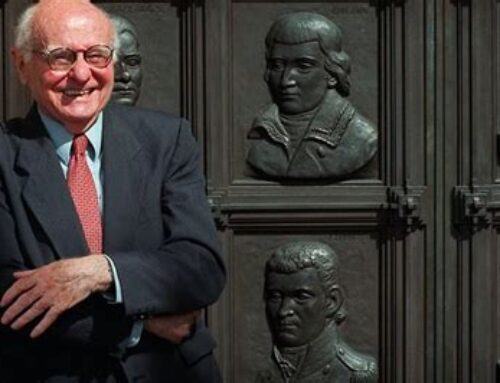Written by Nicholas Harrington. Feature image by Joshua Hoehne on Unsplash.
Adapting what Niels Bohr says about ‘pictures of reality’ – relating to wave and particle descriptions of photons – we can examine Black Lives Matter as a social phenomenon, more completely. While it might be politically expedient to dogmatically adopt either a wave-BLM-picture (it’s all oppression), or a particle-BLM-picture (it’s all behaviour), neither representation is an adequate description of our social reality. Until a more ‘complementary’ description is adopted it is hard to see how politics can address the phenomena underlying racial inequality in any meaningful way.
In many ‘Western’ states, 2020 is a watershed for racial equality. The distinctions between lived experiences in society are being heard broadly, and movements such as Black Lives Matter are finally receiving endorsement from the majority. According to Pew research, in June of this year, 67% of all adults surveyed in the U.S. expressed either ‘strong’ or ‘moderate’ support for BLM – up from 43%, when Pew undertook the same survey in May 2016. Furthermore, social awareness and a popular groundswell is manifesting in concrete legislative, policy, and institutional change. In the wake of nationwide protests over the death of George Floyd while in police custody – Austin, New York, Los Angeles, Baltimore, and nine other cities across the United States have begun defunding police departments and re-orienting resources to their African American communities and associated programs. Despite these positive entanglements, I’d like to raise a word of warning and highlight why this critical moment may be looked back on as a missed opportunity.
I’m going to examine racial inequality, the dominant discourse surrounding race in the West, and the Black Lives Matter movement, using the quantum perspective I’m developing as part of my current PhD: The philosophy-physics of Niels Bohr.
Niels Bohr (1885 – 1962) was a renowned physicist. He won the Nobel prize in 1922 and was instrumental in advancing an interpretation of quantum physics that is variously called the orthodox, textbook, or the Copenhagen interpretation. All of this is well known. What is perhaps less well known, and certainly less understood, are Niels Bohr’s own views about what quantum physics had to say about the world around us (what he shorthanded as nature). The long answer takes half a PhD. The short answer is: nothing. That’s right, Niels Bohr didn’t have anything to say about the world around us. Bohr wasn’t interested in what quantum physics had to say about nature – he was obsessed with what quantum experiments indicated we could know about nature. Quite literally, Bohr spent the last four decades of his life trying to convey to his audience there are strict limitations on our ability to describe reality – since we are obliged to rely upon mental pictures derived from classical physics.
The best way to explain this subtle, though critical distinction – between a view about what is (ontology) and a position on knowing about what is (epistemology) – is to take up the seminal wave-particle paradox with which all physicists were confronted in the early 20th century. In 1923, Arthur Compton demonstrated that under certain experiments light behaved like a particle, and under others like a wave. This begged the question: is light a wave or a particle? – the wave-particle paradox. According to Bohr, the issue isn’t that light is a wave or a particle; or, that light is a wave and a particle; or, that light is neither a wave nor a particle but something yet to be discovered – it’s that to properly understand light we must have recourse to these two (seemingly) contradictory and (seemingly) mutually-exclusive pictures. This is the thrust of what Bohr termed complementarity: many phenomena are of such a kind that they can only be adequately described with recourse to two distinct classical ‘pictures.’ They are complementary because the two specific pictures are necessary (and in such a way ‘complement’ one another) for a complete description.
Returning to the present, what does complementarity have to do with racial justice? I’d argue that the dominant public discourse surrounding race, and in particular Black Lives Matter, takes the form of a wave-particle paradox. And, because the discourse reflects a duality – rather than a complementarity – racial inequality as a social phenomenon is itself obscured by its partial description.
Please note, I am not denying the plurality and heterodoxy of voices in society writ large. Rather, that the discourse I critique is the dominant discourse, necessarily meeting the needs of established power relations, and, as such, that which must be challenged.
On one side of the paradox, are those who characterise racial inequality as ‘all oppression,’ hold that whatever disproportionality in society can be quantified along racial lines has ‘structural racism’ as its cause, and, therefore, prescribe the deconstruction of white supremacy as the remedy. Let’s call this the particle-picture of racial inequality. On the other side, are those who characterise racial inequality as ‘all behaviour,’ hold that whatever disproportionality in society can be quantified along racial lines has differences in cultural, group, or individual behaviour as its cause, and, therefore, argue personal responsibility is the remedy. This is the wave-picture of racial inequality. The paradox is that those who subscribe to either a particle or wave view of racial inequality are convinced theirs is the singular, and only correct, picture of reality.
Unfortunately, Black Lives Matter is patterned within the dominant discourse according to this wave-particle paradox. BLM on the one side; ‘All lives matter’ on the other. So long as this discourse prevails, progress will be at the margins, solutions will continue at zero or low-cost for the system, and we miss diagnosing the indispensable factors underpinning racial inequality.
Therefore, let us attempt a complementary description of racial inequality.
Is there race-based oppression in the West? Yes. Is racial inequality adequately described by oppression? No. Is behaviour a factor in negative outcomes for individuals that can then be quantified along racial lines? Yes. Is racial inequality adequately described by behaviour? No.
So, if we have to preserve both (seemingly) contradictory and mutually exclusive pictures of racial inequality, what are we talking about? Racial inequality is a phenomenon where individuals are oppressed because they are associated with groups to whom behaviours have been ascribed that are the consequence of a prior inequality.
If you don’t take the particle-picture (behaviour) seriously, you can’t get to the structural causes of the behaviour ascribed to the groups to which individuals are then associated. And, if you don’t take the wave-picture (oppression) seriously, you won’t look for causes beneath the behaviours ascribed to groups to which individuals are associated.
The complementary perspective enables us to describe the phenomenon as one where prior structural inequalities promote behaviours that become ascribed to groups that generate oppression for individuals associated with those groups.
Of course, there’s a reason the dominant discourse adopts the ‘binary-paradox’ not complementarity. The costs the system would incur in addressing the ‘prior structural inequalities’ would be meaningful and necessitate a dramatic shift in priorities. In many ways, addressing the ‘prior structural inequalities’ is an existential crisis for the system.
Imagine, if you will, what it would mean for the United States to have a minimum wage of US$20 – thereby ending the labour-cost subsidisation Wal-Mart receives in the form of food-stamps, housing and other public assistance for their workforce. Imagine the political ramifications of raising US$1.75 trillion per year for Medicare For All – more than the entire 2020 federal budget. This would oblige cuts to the $700+ billion spent annually on defence; while large corporations like Amazon would need to start paying federal taxes.
It’s no accident Black Lives Matter finds itself in a wave-particle paradox. It maps the needs of the system. The prevailing discourse eschews the tough questions, ignores the underlying reality, and, all the while, the public never sees an adequate picture of reality.
It’s time we adopt a complementary view of racial inequality and shift the conversation onto some uncomfortable truths. More uncomfortable than the number of cops on the beat, rearranging chairs in the board room, updating tag-lines in corporate advertising, and diversifying the alumni of elite universities. Let’s use this critical moment to talk about making inner-city, majority African American areas, places where liberal-coastal-elites would live. Meaningfully coming to terms with these ‘crucibles of disadvantage’ is the conceptual shift made possible by a complementary description of racial inequality.







Thanks Nicholas for this clear-sighted description of your approach to social analysis in the context of BLM. I’d love to know more about how you see this framing of the discussion in the terms of Bohr’s complementarity as differing from or moving beyond existing arguments that promote the recognition of both structure AND agency as having a role in socio-political states, rather than privileging one or the other. In other words, at first blush, your point seems to provide a fascinating alternative analogy for the longstanding structure/agency paradigm, but I’d like to understand whether and how your analogy works as a tool for thinking with that creates change in a way that is not available without that tool.
Kay, firstly, thank you for taking the time to read the article. You’ve raised a critical point (and one which is a general complaint of most attempts to ‘drag’ quantum into the social sciences), i.e., ‘what’s new’ about the perspective/form of analysis? In my dissertation, I’ve termed this the ‘obiectio prima.’ I think you’e quite right that, in ‘this’ context, Bohr’s complementarity (or the two complementary pictures of reality) assumes the familiar agency/structure binary. However, applying complementarity to diverse phenomenon reveals particular binaries in each case.
[For example, if we consider COVID-19: hoax vs. world-halting pandemic – structure/agency isn’t a useful binary in this case – and yet, Bohr’s complementarity can be used to reveal the (seemingly) contradictory pictures required for a ‘complete’ (his word, I prefer ‘adequate’) understanding of the phenomenon.]
And, yes, these binaries will be familiar. Indeed, they are necessarily so, since we can only make use of what Bohr would call ‘classical pictures’. So, the takeaway isn’t (simply) that (in the case of BLM) “both structure AND agency [have] a role in socio-political states.” Rather, that the existence of these competing binaries reveals a problem with the way we understand phenomena in general. Both structure and agency are REQUIRED in the case of BLM. However, in the case of another phenomenon, the two pictures required will be (necessarily) different.
Another way to look at what Bohr is getting at is a preponderance (and this is where the ‘politics’ side of my dissertation comes in) of seeking ‘ontological supremacy.’ There is a persistent and pervasive tendency to understand and describe reality through one ontological frame (one ‘picture-making apparatus). Bohr is inviting us to drop ontological supremacy and assume a form of ontological ‘anarchy’ (where no single picture has authority). The thrust of Bohr’s perspective is: any time a phenomenon is raised, stay on alert for ‘single ontological explanations,’ seek the (seemingly) contradictory picture of reality, and believe that through their incorporation a more adequate understanding of any phenomenon is made possible.
Bohr was an epistemologist first and foremost. He sought a better way of ‘knowing,’ without prescribing a particular ‘form’ of knowledge.